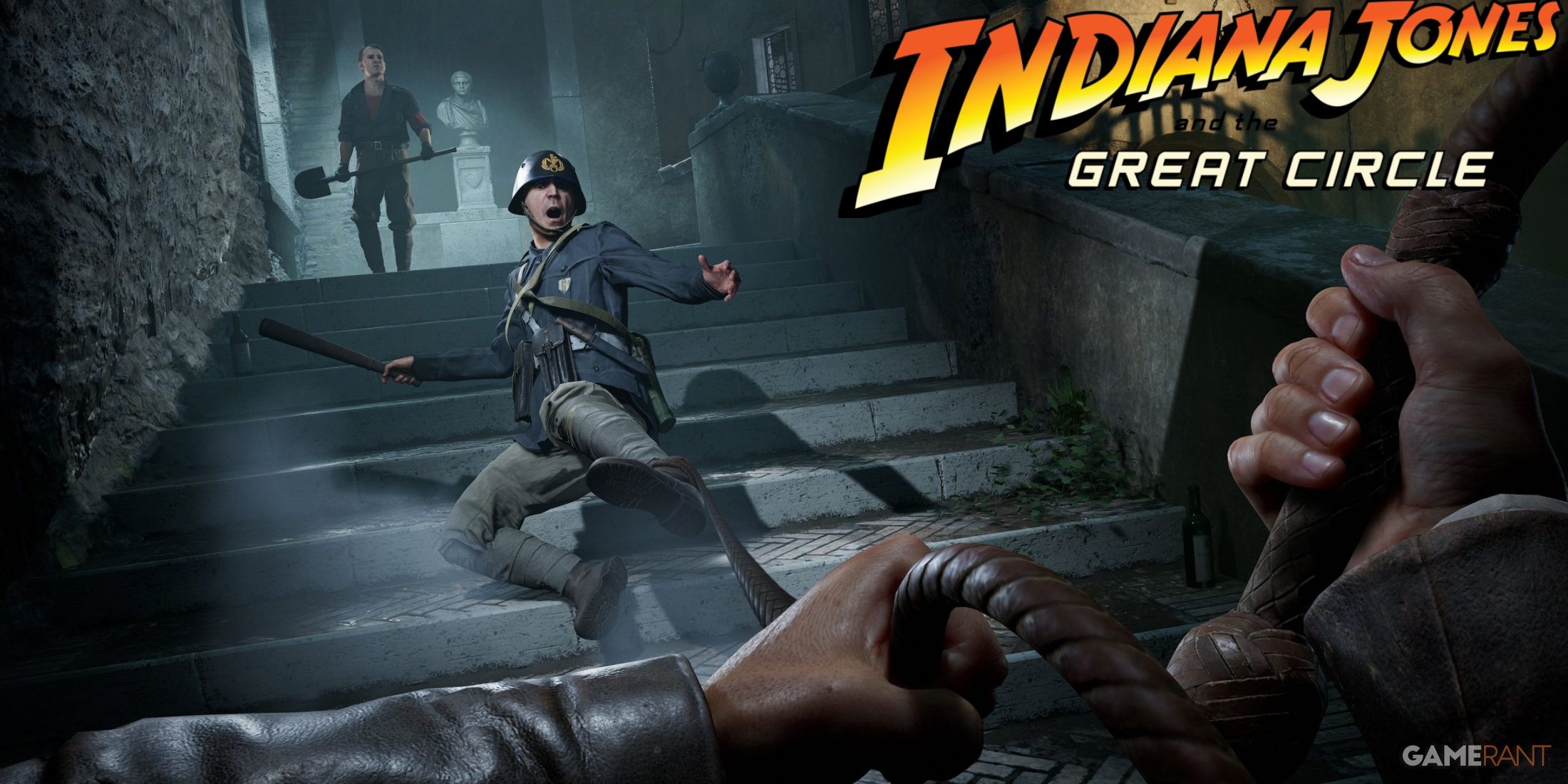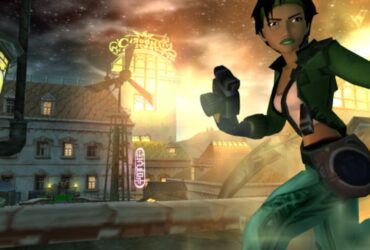Raiders of the Lost Ark begins with a now-iconic expedition to the Temple of the Golden Idol, where Indiana Jones makes his way slowly through ancient traps and puzzles to claim the shining prize before having to make a climactic escape through the Peruvian jungle. This opening sequence laid the groundwork for many of the Indiana Jones franchise’s set pieces, with tomb-raiding becoming a core part of the series’ identity. And Indiana Jones and the Great Circle embraces this identity wholeheartedly.
The general loop of Indiana Jones and the Great Circle sees players get dropped into a big open area, such as the Vatican or Gizeh. Players make their way through this area, completing side objectives and main quests until they eventually embark on a final mission to explore some kind of secret tomb or dungeon. Just like every other aspect of Indiana Jones and the Great Circle, developer MachineGames has gone out of its way to make these tombs feel authentic to the spirit of Indiana Jones.

Related
One Subtle Element Really Helps to Make Indiana Jones and the Great Circle Feel Authentic
Indiana Jones and the Great Circle feels incredibly authentic, and there’s one subtle element it embraces that puts the cherry on top of the cake.
Indiana Jones and the Great Circle’s Tombs Feel Like They’ve Been Ripped From The Movies
Indiana Jones and the Great Circle’s Tombs Look and Feel Faithful
One of Indiana Jones and the Great Circle‘s biggest strengths is its presentation, and how that consistently captures the look and feel of the Indiana Jones franchise. This is especially apparent in the game’s tombs and dungeons, which all feel as though they could have been ripped right out of the movies.
All of Indiana Jones and the Great Circle‘s dungeons feature architecture and environmental design that feel faithful to the source material. Tombs are lined with mighty stone blocks, pathways are blocked by gigantic doors, sarcophagi lie against the walls, and broken artifacts litter the floor. Each and every piece of set dressing makes Indiana Jones and the Great Circle‘s tombs feel suitably ancient and grandiose, fueling the feeling that the adventure players are on is important.
Indiana Jones and the Great Circle‘s lighting reinforces this feeling, and goes a long way in fueling the player’s sense of discovery. In the early areas of the game, players need to rely on the natural light that’s already present in the tomb. These light sources are often sharp beams of sunlight, small circles of torchlight, or the ominous red glow of a fire pit. As well as looking just like the tombs in the movies, these natural light sources encourage players to keep moving forward to find the next light source.
The sound design in Indiana Jones and the Great Circle puts the final touches on the tombs’ authentic presentation, with the creak of ancient gears, the rattling of chains, the loud clack of footsteps on cobblestone, and the low crackle of a torch’s flame all acting as constant reinforcement of the game’s faithfulness to the source material.
Indiana Jones and the Great Circle’s Puzzles and Traps Reinforce Its Authenticity
But it wouldn’t be an authentic Indiana Jones tomb without some traps and puzzles, and The Great Circle has plenty of those. From brief platforming trials that see players jump past oversized swinging axes, to classic mirror-rearranging puzzles, to solving ancient inscriptions through the use of Indy’s diary and camera, Indiana Jones and the Great Circle ensures all of its dungeon puzzles and traps feel as though they’d fit right in with their movie counterparts.













Leave a Reply